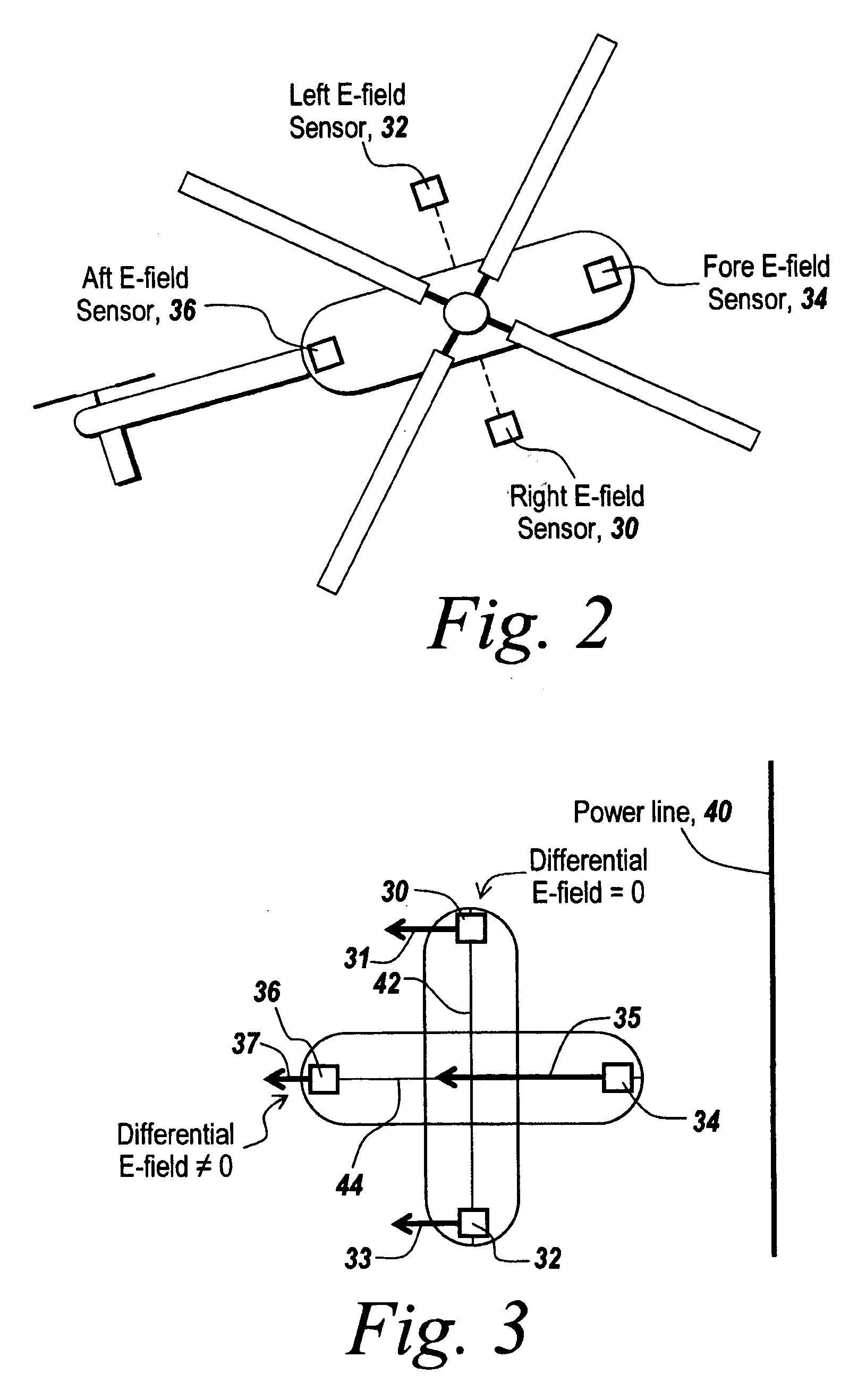Method and apparatus for avoidance of power lines or trip wires by fixed and rotary winged aircraft
a technology of fixed and rotary winged aircraft and avoidance method, applied in the direction of process and machine control, instruments, etc., can solve the problems of affecting the safety of pilots, so as to reduce pilot anxiety for low-level missions
- Summary
- Abstract
- Description
- Claims
- Application Information
AI Technical Summary
Benefits of technology
Problems solved by technology
Method used
Image
Examples
Embodiment Construction
[0053] It was found during testing that one could reliably detect power lines at 1,000 feet and that one could readily determine the direction of the power lines relative to the flight path of the aircraft. Thus, it became readily apparent that one of the major utilities for the differential E-field sensors was on low level combat missions where danger to the pilot and the aircraft is due to the existence either of unmapped, virtually invisible power lines or, in fact, to virtually invisible trip wires that are sometimes used to countermeasure low-flying aircraft such as helicopters and UAVs in addition to towers, long vertical upright antennas, etc.
Power Lines
[0054] Referring now to FIG. 1, in one embodiment a helicopter 10 is flying along a flight path 12 towards power lines 14. As is oftentimes the case, the power line locations are unknown and are relatively invisible such that the pilot requires advance notice of their presence to be able to avoid them.
[0055] As part of the ...
PUM
 Login to View More
Login to View More Abstract
Description
Claims
Application Information
 Login to View More
Login to View More - R&D
- Intellectual Property
- Life Sciences
- Materials
- Tech Scout
- Unparalleled Data Quality
- Higher Quality Content
- 60% Fewer Hallucinations
Browse by: Latest US Patents, China's latest patents, Technical Efficacy Thesaurus, Application Domain, Technology Topic, Popular Technical Reports.
© 2025 PatSnap. All rights reserved.Legal|Privacy policy|Modern Slavery Act Transparency Statement|Sitemap|About US| Contact US: help@patsnap.com



